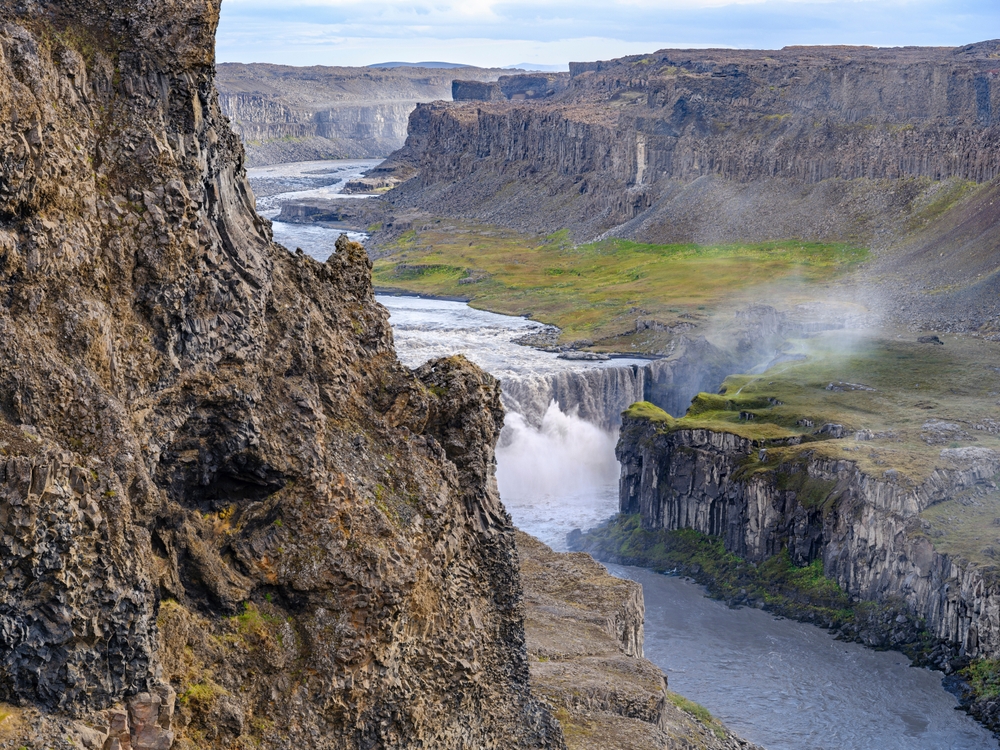Jokulsargliufur Overview
Jökulsárgljúfur National Park, nestled in the northeastern region of Iceland, offers an awe-inspiring glimpse into the rugged and pristine beauty of the island. Now part of the larger Vatnajökull National Park, this park spans an impressive 121 square miles (313 square kilometers) and is defined by the breathtaking Jökulsárgljúfur canyon, carved by the powerful Jökulsá á Fjöllum River.
The park’s name translates to “Glacial River Canyon,” highlighting the deep connection between its defining feature and the glacial forces that have shaped the Icelandic landscape over millennia. Situated near the town of Húsavík, the park lies in the shadow of the Arctic Circle, making it a land of stark contrasts and dramatic vistas.
The terrain is dominated by the canyon itself, one of the most prominent and longest in Iceland, stretching over 16 miles (25 kilometers) and reaching depths of nearly 300 feet (90 meters). The canyon’s rugged walls are interspersed with lush vegetation, making it an exceptional example of the interplay between harsh geological forces and delicate ecosystems.
One of the most famous features of Jökulsárgljúfur is Dettifoss, Europe’s most powerful waterfall, where thunderous torrents of water crash down a 144-foot (44-meter) drop. Other highlights include Selfoss and Hafragilsfoss, which also contribute to the park’s reputation as a wonderland of waterfalls.
The Ásbyrgi canyon, shaped like a giant horseshoe, is another captivating geological formation, believed to have been created by catastrophic flooding events thousands of years ago. This area is lined with birch forests and wildflowers, offering a softer contrast to the jagged cliffs and roaring waters.
Jökulsárgljúfur is home to a variety of wildlife that thrives in its diverse habitats. Birdwatchers can delight in spotting species like the gyrfalcon, rock ptarmigan, and pink-footed geese, while the cliffs of the canyon provide nesting grounds for ravens and fulmars.
Mammals are less common, though arctic foxes and reindeer may occasionally be seen roaming the terrain. The park also hosts a wide range of insects, mosses, and lichens that have adapted to the volcanic soil and subarctic climate.
Visitors are drawn to the park for its incredible scenery and opportunities to explore its unique features. Hiking trails, such as the popular Ásbyrgi to Dettifoss route, provide access to the heart of the park’s dramatic landscapes.
River rafting on the Jökulsá á Fjöllum River offers an adventurous way to experience its power up close, while interpretive tours and guided hikes allow for deeper insight into the area’s geology and ecology. Stargazing is particularly rewarding in this remote location, where the absence of light pollution offers unobstructed views of the night sky.
Conservation efforts have played a critical role in maintaining the park’s ecological integrity. Strict guidelines help mitigate the impact of tourism, ensuring that the delicate vegetation and wildlife are protected. Collaboration with local communities and scientific research initiatives has contributed to a balance between human activity and preservation. Despite challenges such as climate change and erosion, the park remains a testament to Iceland’s commitment to safeguarding its natural treasures for future generations.











































































